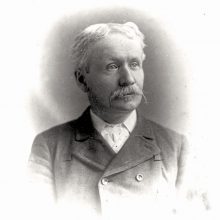Motivation and Formation
July 1, 2017 marks the 150th anniversary of Canada’s Confederation. The forces driving the British North American colonies into political union were both complex and varied but focused upon military protection, cultural freedom, and sovereignty in the West that were all driven by industrial economic issues.
The creation of Canada in 1867 from the original colonies of Nova Scotia, New Brunswick and united Upper and Lower Canada, was at best a ponderous process. Talks were held at Charlottetown and Quebec City in 1864 and London in 1866, concerning a 1790 proposal for a colonial union. Prince Edward Island joined in 1873 but Newfoundland waited until 1949. There would be various other additions further west both before and after PEI. Gaining independence was an even slower process, only fully achieved with the Constitution Act of 1982. It was also not always a peaceful journey as evidenced by the two Riel Rebellions.

The smoke from the U.S. Civil War (1861–65) had barely cleared when the Irish Fenians (1866–71) raided BNA in a bid to gain Ireland’s freedom. As well, the British had favoured the South during the Civil War — mainly to protect the flow of cotton to their mills. The Trent incident and the St. Alban’s raid after which southern forces took refuge in Montreal created diplomatic hostility between the U.S. North and Britain. The building of confederate blockade runners in England soured relations further with the colonies caught in the middle. In 1862, 15,000 British troops were sent to strengthen the colonial border and later the Dominion Police were recalled east but it was apparent that lateral deployment through the colonies would be difficult without adequate railroads. The fact that thousands of men from Upper Canada had fought for the North was forgotten. Potentially another War of 1812 loomed on the horizon.
In 1865 the U.S. federal government could put at least a million troops in the field, exercised revenge against its previous enemies during Reconstruction and promoted the jingoism of Manifest Destiny — the idea that the U.S. was destined to own all of North America. The U.S. — unhappy with British foreign policy — cancelled the 1854 Reciprocity trade agreement between British North America and the United States, producing an economic blow to the colonies.
Britain seemed willing to let the colonies achieve a measure of independence beyond merely exercising responsible government if that would make them self-sufficient in terms of colonial costs to Britain. The political leaders of the colonies, many of them future fathers of confederation huddled together at Charlottetown and Quebec City to overcome the challenges facing them. They saw the resulting destruction from the Civil War, reasoned that strong state rights and a weaker federal system was a contributing cause and formulated a strong centralized government as a blueprint for Canada. To cement Confederation together a national economic policy was constructed around the future CPR, tariffs and immigration.

Railroads — while costly and incomplete — were certainly useful during the Riel conflict which led to Manitoba joining Confederation in 1870. Whether Riel was a father of confederation or an outlaw depends upon perceptions but he was hanged for his trouble after the Saskatchewan rebellion in 1885. Railroads facilitated the westward movement of troops and the Manitoba crisis had affected the financial leverage needed to eventually complete the CPR that would aid in terminating the second crisis.
The Creation of the NWMP in 1873 to provide law and order drove out the whiskey traders, prevented a reoccurrence of the Cypress Hills Massacre and reminded the U.S. exactly where the border was located. Our sovereignty in that regard would be tested during Sitting Bull’s stay in Canada. They strengthened Canadian unity while making obvious our ties to Britain and in the process it became safer for ranchers and homesteaders to extend into the West as Saskatchewan and Alberta became provinces in 1905.
On the West Coast, as settlement increased from the gold rushes, various forces worked to bring B.C. into confederation against other forces struggling to keep it out. Some politicians wanted B.C. to remain a colony and others wished it annexed to the U.S. It was the promise of a railroad linking it to the rest of Canada that finally lured B.C. into the fold out of the grasp of the annexationists in 1871.
In March, 1867 the British Government passed the British North America Act to come into effect on July 1, 1867. The BNA Act gave the authority to the Queen to declare by proclamation that the provinces of Canada (West and East), New Brunswick and Nova Scotia be a union under the title of the Dominion of Canada. Canada West was renamed Ontario and Canada East was renamed Quebec. Confederation had been achieved and a new North American nation had been born with many trials and challenges yet to be faced.












